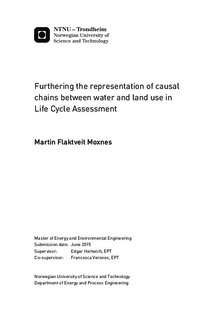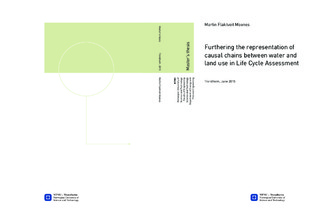| dc.contributor.advisor | Hertwich, Edgar | |
| dc.contributor.advisor | Verones, Francesca | |
| dc.contributor.author | Moxnes, Martin Flaktveit | |
| dc.date.accessioned | 2015-10-05T14:51:23Z | |
| dc.date.available | 2015-10-05T14:51:23Z | |
| dc.date.created | 2015-06-11 | |
| dc.date.issued | 2015 | |
| dc.identifier | ntnudaim:13411 | |
| dc.identifier.uri | http://hdl.handle.net/11250/2350128 | |
| dc.description.abstract | In this thesis the causal chains between deforestation and increased flood impacts are assessed for expanding the life cycle impact assessment (LCIA) methodology. Until recently the impact categories water use and land use have been treated separately, even though they are closely interrelated in reality. Heuvelmans et al. (2005) established a framework for the causal chains between land use and the water balance, but the work stayed theoretical and operational characterization factors did not come out of their approach. The focus of this paper is on deforestation causing increased surface runoff through decreased evapotranspiration. This leads to increased flood impacts on human health. This thesis presents operational fate factors, effect factors and characterization factors for quantifying the impacts from deforestation through floods and increased damage on human health. Human health damage is measured in disability-adjusted life years (DALY). The proposed characterization factors are applied in a case study for Pakistan and Mozambique. The results for Pakistan and Mozambique were 1.39E-08 DALY/m2 and 5.46E-10 DALY/m2 respectively. This result shows that the causal chain is important for substantial deforestations in vulnerable areas. | |
| dc.language | eng | |
| dc.publisher | NTNU | |
| dc.subject | Energi og miljø, Energi- og miljøanalyse | |
| dc.title | Furthering the representation of causal chains between water and land use in Life Cycle Assessment | |
| dc.type | Master thesis | |
| dc.source.pagenumber | 43 | |

